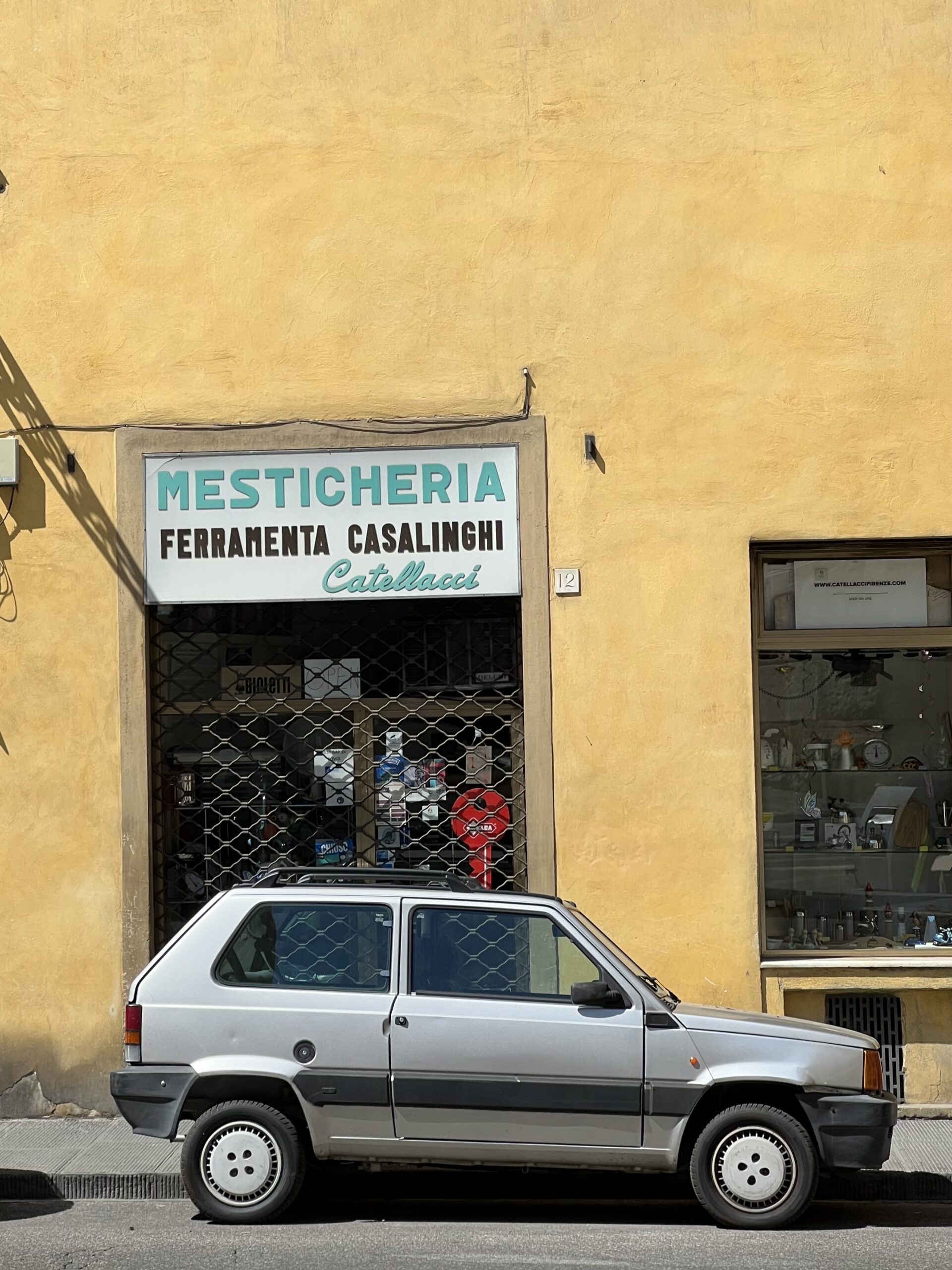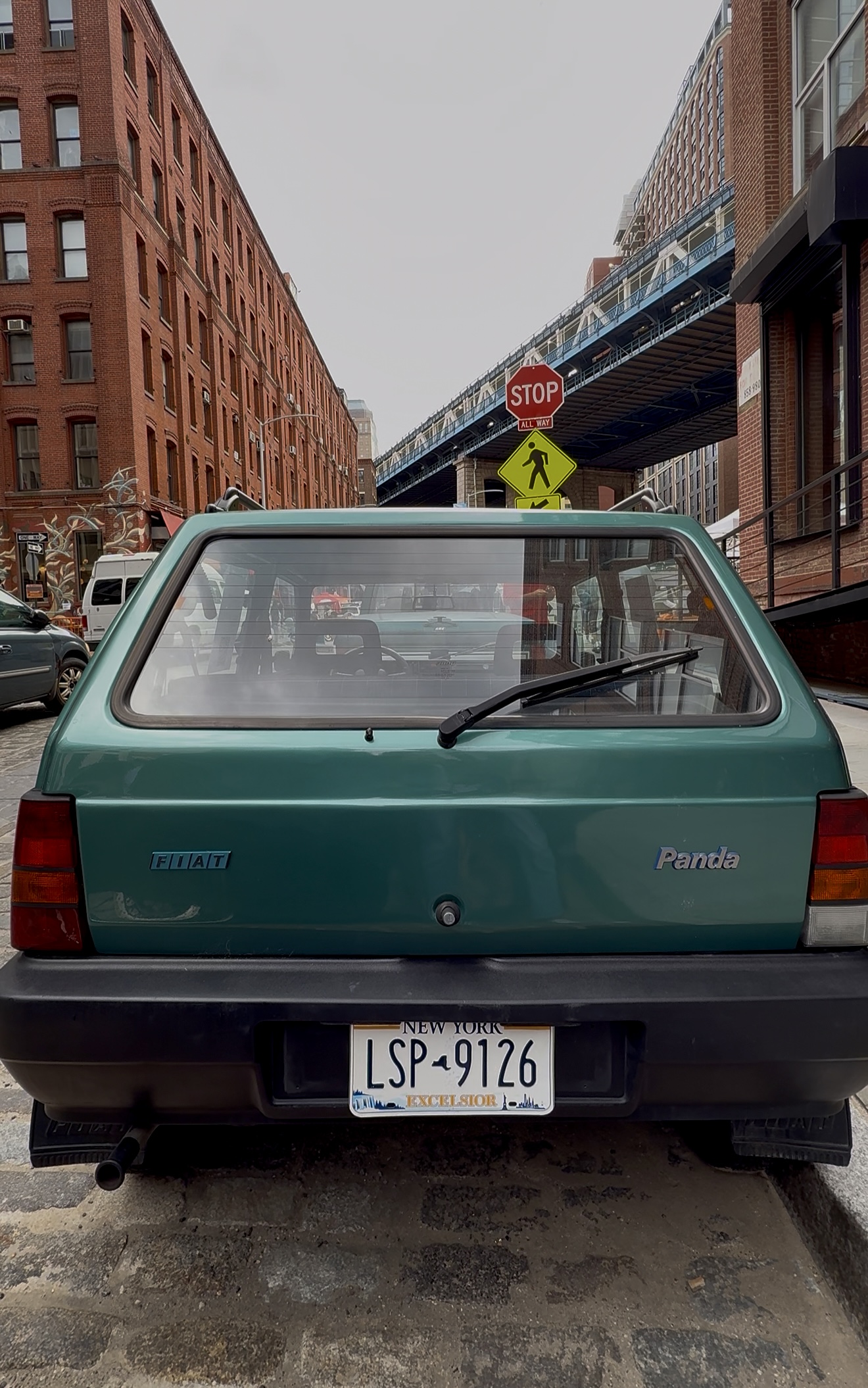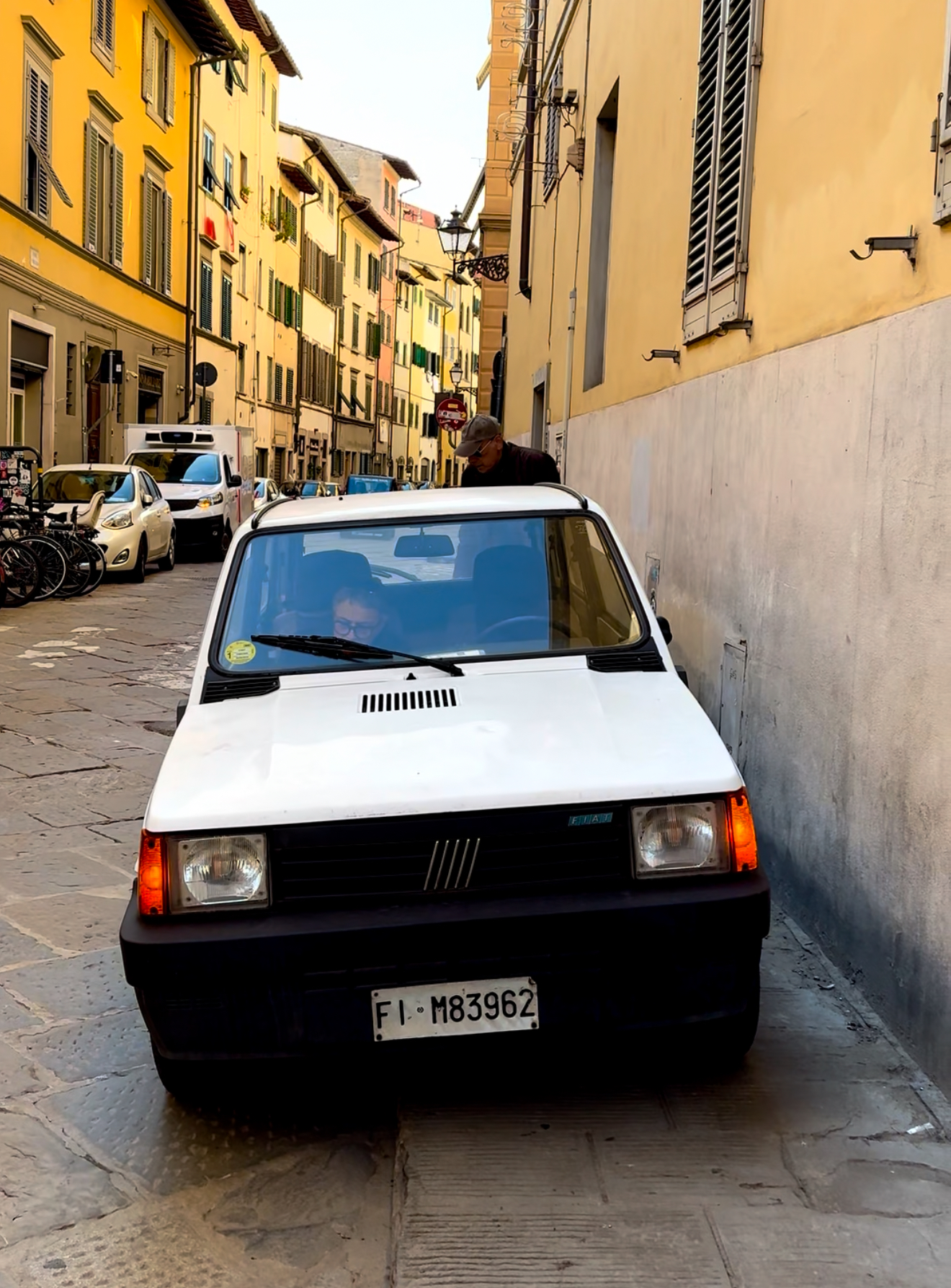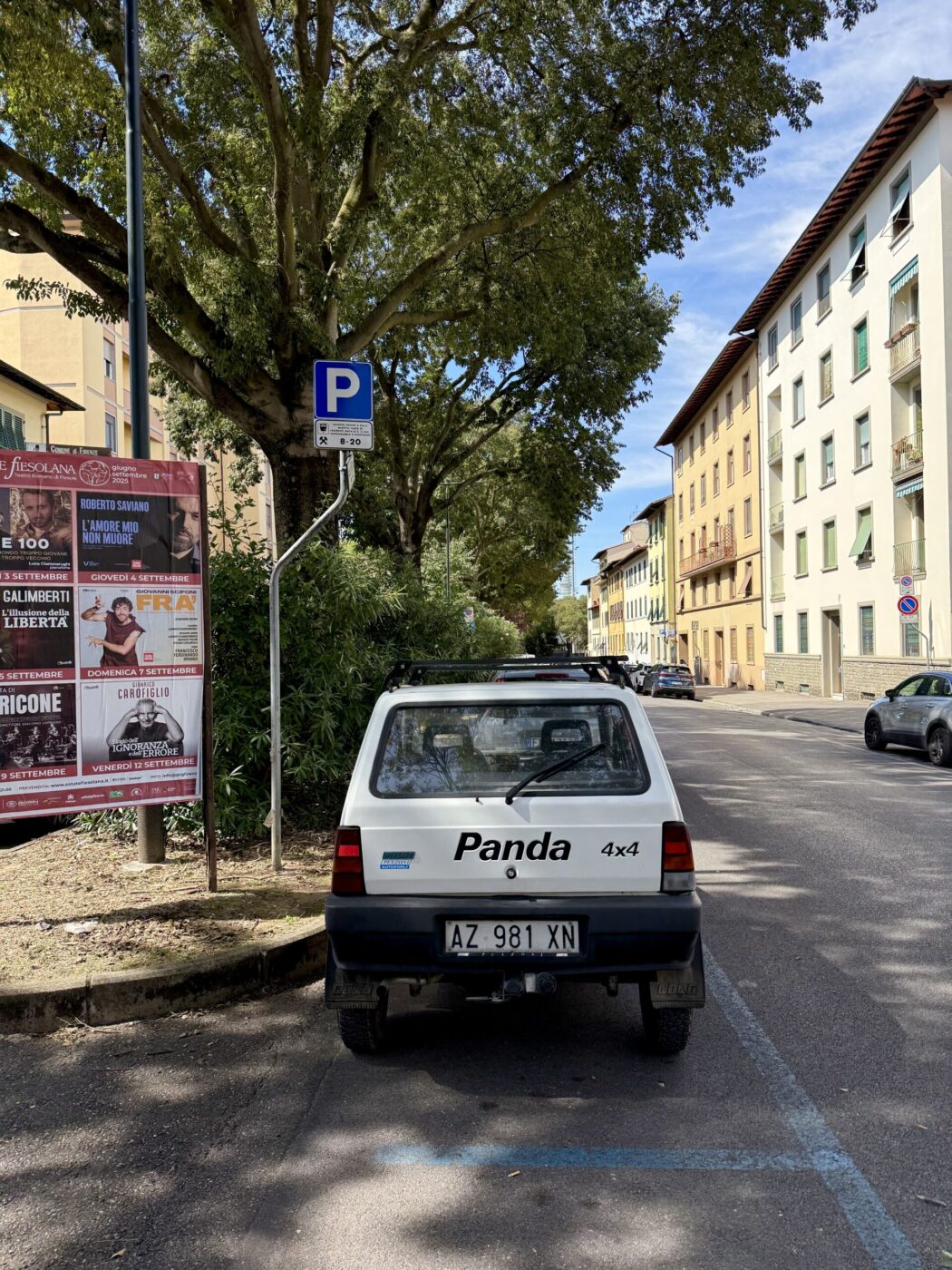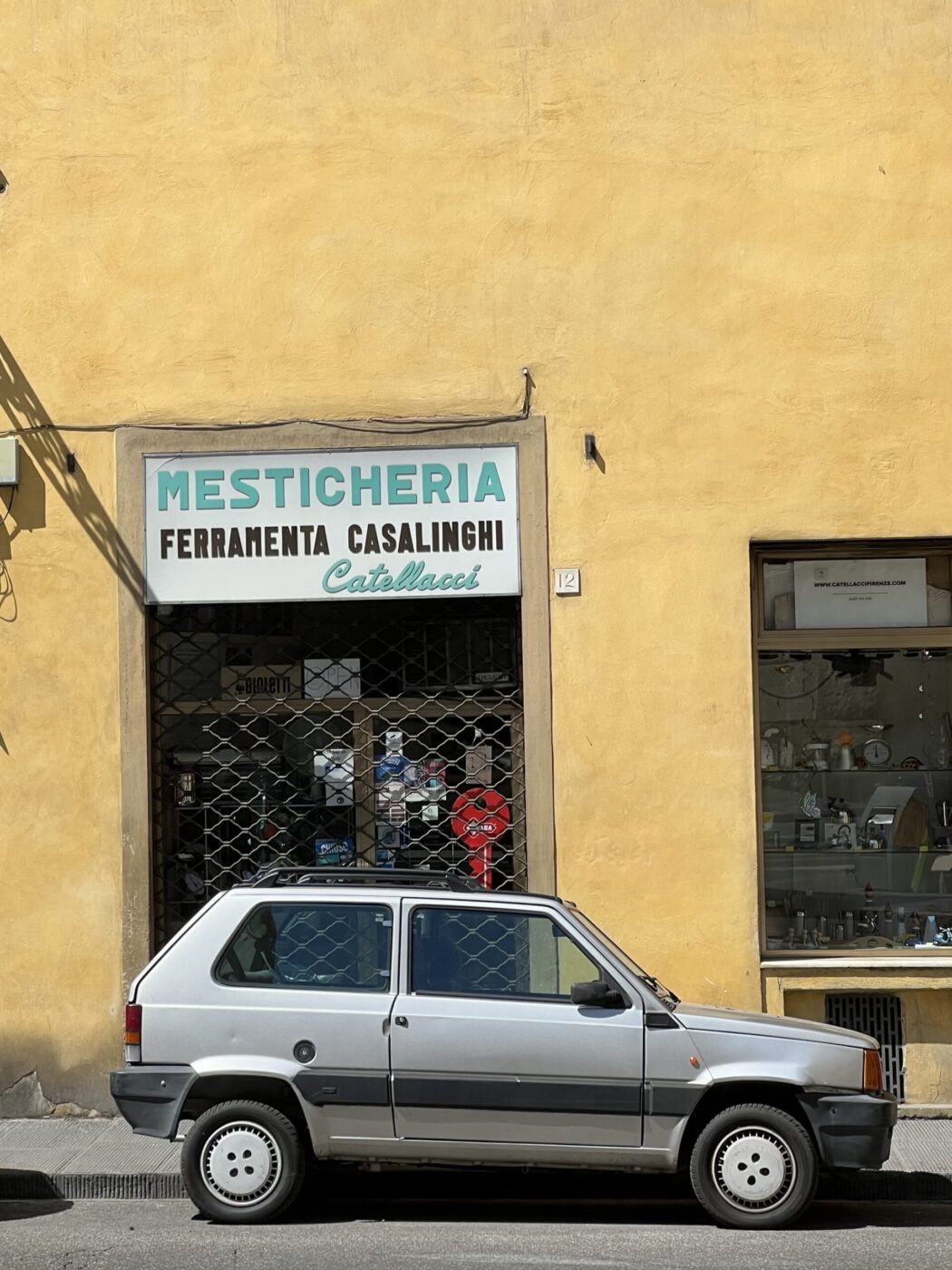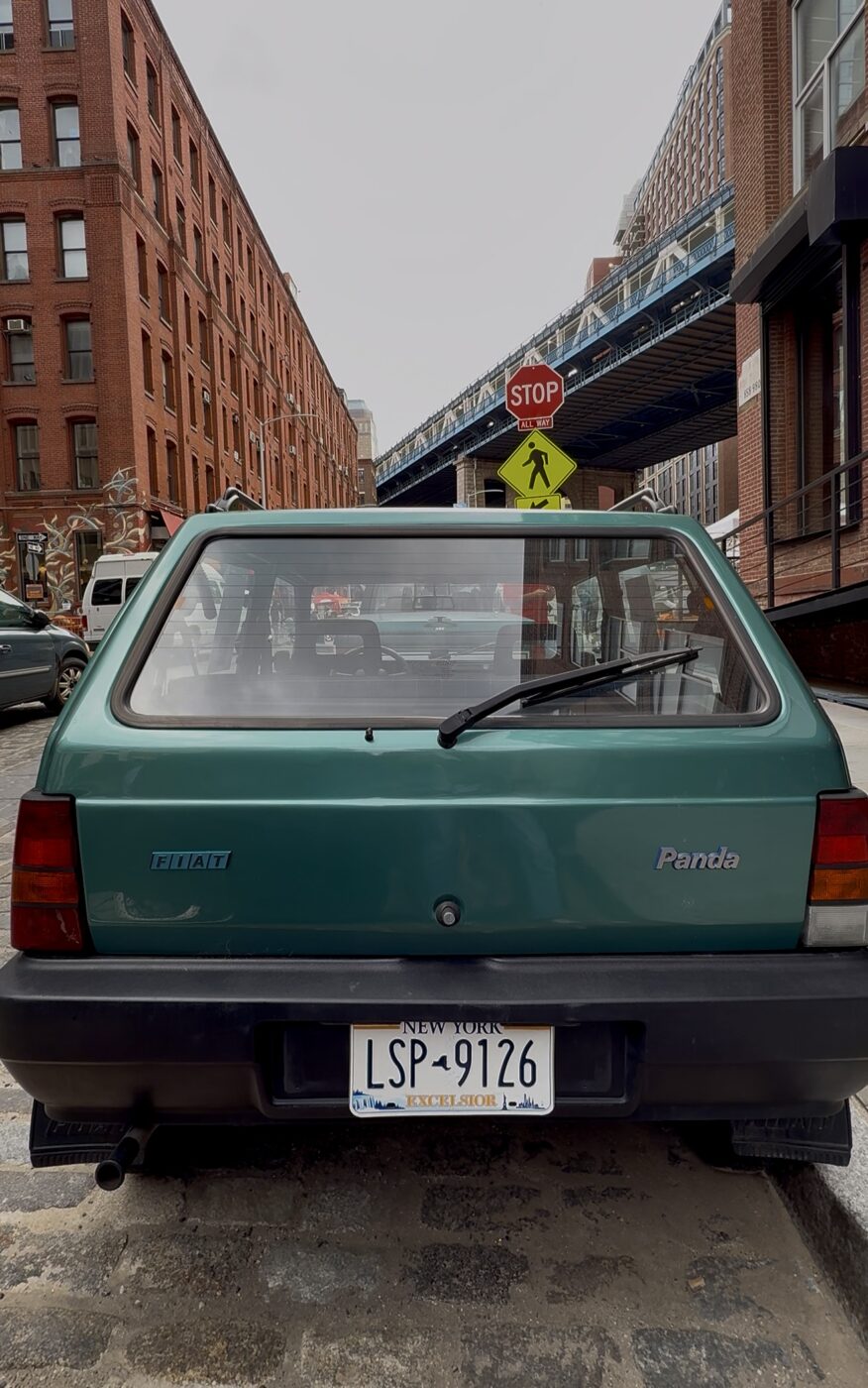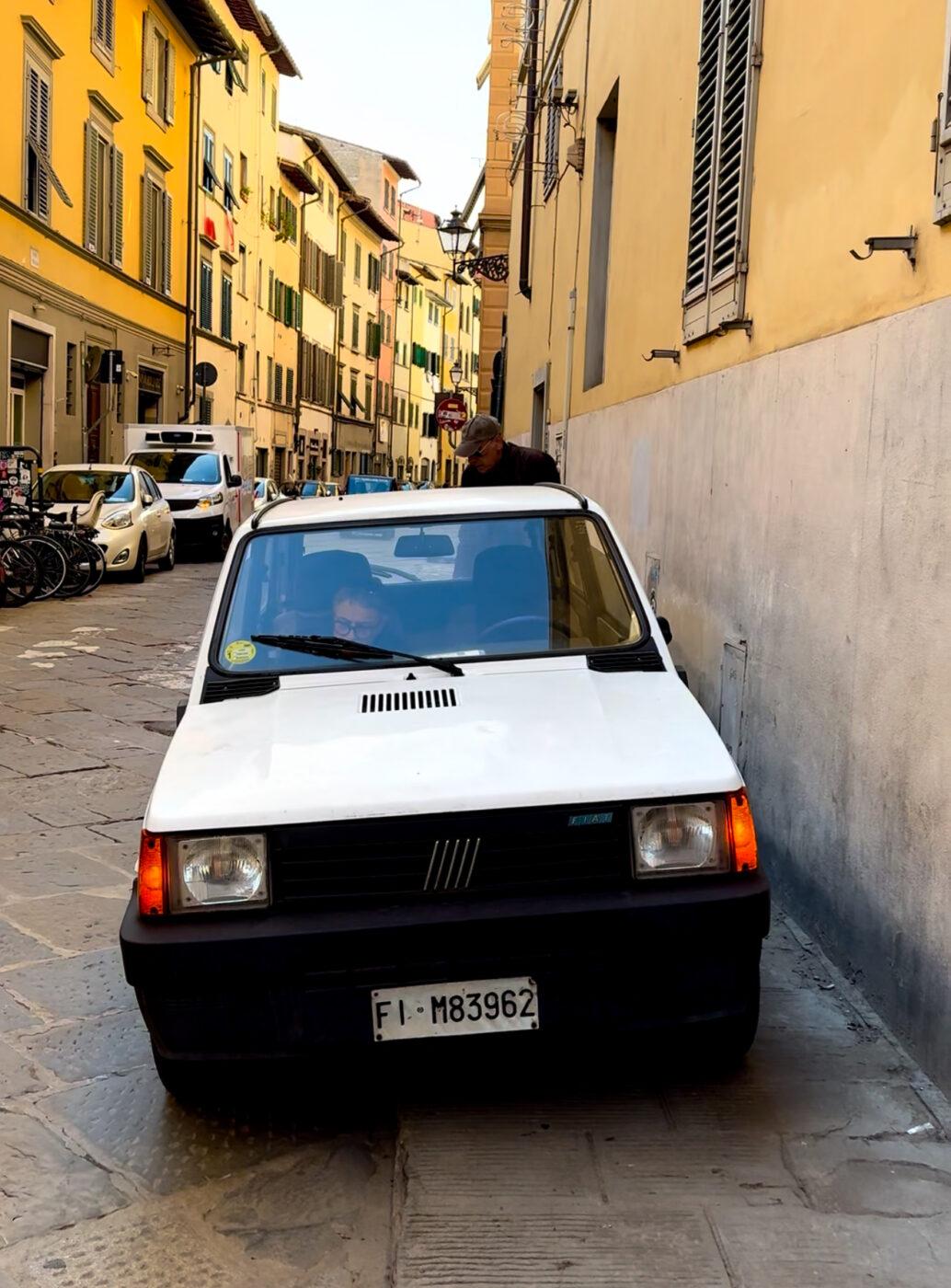Forget the Ferrari fantasy—the car that actually runs Italy is the FIAT Panda. A box on wheels, the automotive equivalent of the Nokia 3310, the durable, unfussy Panda is impossible to escape here.
Launched in 1980 at the Geneva Motor Show and designed by Giorgetto Giugiaro, the Panda was Italy’s no-frills car for anyone and everyone. Giugiaro claims that he was inspired by military helicopters—light, rational machines built purely for function—and famously compared his design to “a pair of jeans: simple, practical, unpretentious.” (Giugiaro would go on to be named Car Designer of the Century in 1999 and added into the Automotive Hall of Fame in 2002.)
Though “Panda” conjures images of the namesake black-and-white bear, the car’s name was derived from the Roman goddess Empanda, the protector of roads and travelers; fitting for a model designed for practicality and advertised by FIAT as “the great little box.”
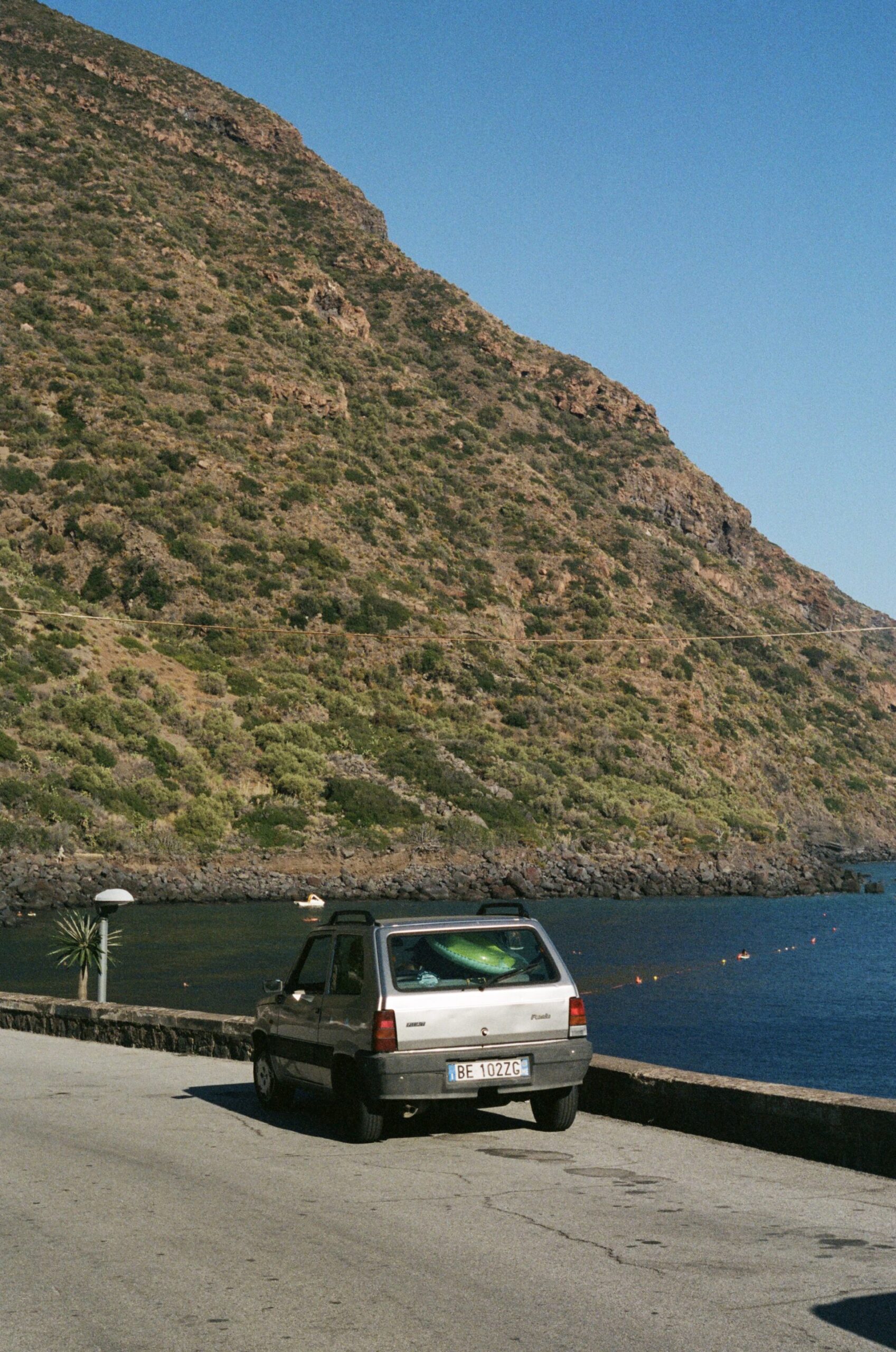
The first model, the Panda Type 141, hit the streets in 1980 and was sold for only five years. Its successor, the FIAT 141 A—“A” for aggiornato, updated—remained in production until 2004. But it was in 1983 that FIAT gave Panda unexpected muscle, introducing the scrappy, all-wheel-drive Panda 4×4, destined for mountain roads and muddy trails.
Though today’s five-door Pandas look almost nothing like these original cars (and are way more comfortable), the old models’ beauty was in their minimalism. In just 3.38 meters, it could seat five, with a back bench that adjusted into seven different positions, becoming everything from a hammock to a cradle to a makeshift bed. Early interiors featured canvas seats stretched over steel frames, as if FIAT had fitted camping chairs inside.
It didn’t hurt that it was affordable—both to build and to sell. In 2000, a brand-new Panda cost just €5,000, and over four million were produced, making it one of FIAT’s most successful models. (Today, collectors hunt for vintage Pandas, and rare 4x4s can fetch sales of over €20,000.)

FIAT commercials from the 1980s played up the Panda’s simplicity, painting it as a “car for the people”—a dependable companion that could take Italians of all classes through daily life and work, leisure time, and travels. It was a democratic car, engineered in the shadow of the 1979 oil shock, so its light build and tiny engines kept fuel and maintenance costs within reach. In 1983, FIAT added the two-seat Panda Van specifically for public bodies, and it quickly wore municipal liveries across Italy—most recognizably Poste Italiane’s yellow-and-blue—an association later cemented by big renewals like the 2000 order of 7,000 Panda Citivan for the mail service.
It’s not that the Panda doesn’t have haters. Its utilitarian sparseness can read a bit “grandpa car.” But that’s also precisely the charm. In a world of bigger, sleeker, flashier automobiles, Giugiaro’s “cinquecento of the ’80s” never pretends to be more than it is. Maybe that’s why Italians—and anyone who’s driven one—still can’t let it go. While other cars try for more, more, more, the Panda is simply enough.
